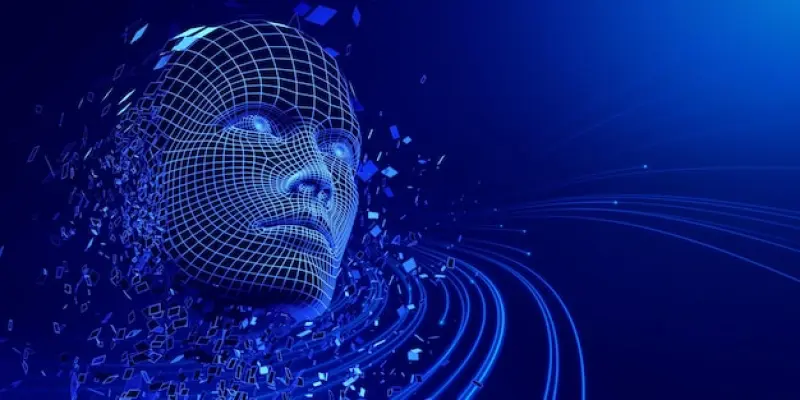The proliferation of AI technologies in recent years has led to remarkable advancements in various domains, including image generation. In this context, AI-powered image generators like ChatGPT, Grok, and Gemini have gained significant attention. These tools, developed by OpenAI, xAI, and Google respectively, have redefined the way visual content is produced. Each possesses distinct characteristics, operational methods, and caters to different user bases, reflecting their unique approach to transforming text prompts into vivid visual imagery. Understanding the strengths and limitations of these AI image generators can help users make more informed choices based on their specific needs.
ChatGPT’s Image Generator
ChatGPT, developed by OpenAI, integrates the capabilities of DALL·E 3 to produce clean, controlled, and reliable images. It stands out by understanding complex prompts, resulting in well-constructed visuals suitable for a wide array of creative endeavors. This AI image generator effectively handles intricate details, making it an excellent choice for projects that require a higher degree of sophistication. Notably, ChatGPT includes an editing feature allowing users to modify specific parts of an image post-creation, enhancing its practicality when the initial output does not meet expectations. By prioritizing safety, the tool avoids realistic depictions of people along with any sensitive or graphic content, ensuring a secure user experience. However, while ChatGPT excels in many areas, its limitations are noteworthy. The emphasis on safety protocols can sometimes restrict the artistic depth achievable within certain projects. Users looking for high levels of realism or attempting to work with more diverse content may find these constraints restrictive. Additionally, though it supports detailed creative work, the process can be comparatively slower for particularly extensive prompts. Nevertheless, ChatGPT remains a formidable tool for generating high-quality images while maintaining a balance between creativity and control, appealing to a broad, professional audience.
Grok’s Bold Approach
In contrast, Grok’s image generator, an innovation by xAI and integrated with X (formerly Twitter), adopts a starkly different approach. Grok thrives on speed and an energetic style, producing visuals that are bold and cartoon-like. It is designed to cater specifically to the dynamic needs of internet culture, making it ideal for generating memes, humorous images, and quick social media content. The generator favors exaggerated imagery, making it a go-to tool for users aiming to create eye-catching and vibrant visuals with minimal effort. This approach has resonated well with a younger, internet-native audience, who frequently partake in and contribute to online trends.
Nonetheless, Grok’s focus on speed and humor comes at the expense of realism and detail. The lack of an editing feature necessitates starting from scratch if an image does not meet the user’s requirements, which can be a significant drawback. Furthermore, the cartoon-like aesthetics, while appealing for certain uses, limit its utility for more serious or professional applications. Users looking for detailed, realistic scenes might find Grok’s offerings insufficient. Despite these limitations, the tool’s ability to produce rapid, engaging content makes it a valuable asset for the quick-paced environments of social media and digital communication.
Gemini’s Thoughtful Design
Google’s Gemini presents a more contemplative approach, crafted to enhance broader projects through its image generation capabilities. Gemini’s visuals are meticulously clean and organized, aiming to seamlessly complement articles, presentations, and academic assignments. This makes Gemini particularly suitable for users in educational and professional settings where thematic coherence and clarity are paramount. The tool’s images are designed to blend effortlessly with textual content, creating a polished and cohesive end product. By prioritizing structured visuals, Gemini provides an invaluable resource for those seeking to enhance their projects with professional-looking imagery.
However, the methodical nature of Gemini also means it can be slower in response compared to its counterparts. This measured pace can be a drawback for users needing rapid results. Additionally, Gemini tends to avoid bold, experimental styles, adhering to a more conservative visual approach. This constraint can limit creative expression, particularly for users who wish to push artistic boundaries. Despite these limitations, Gemini’s reliability and focus on producing calm and tailored visuals make it ideal for structured tasks that demand a steady and professional aesthetic.
Diverse Applications of AI Image Generators
The distinctive characteristics of ChatGPT, Grok, and Gemini highlight the diversity in AI image generation technology. Each tool caters to different needs through their unique features and operational styles. ChatGPT offers a harmonious blend of creativity and control, making it suitable for sophisticated creative projects. Grok emphasizes rapid production and humor, targeting a younger, internet-savvy audience with its bold, engaging visuals. Meanwhile, Gemini’s thoughtful design caters to educational and professional environments, providing clean and organized imagery that enhances broader projects.
The absence of a one-size-fits-all solution in AI image generation means users must carefully evaluate their requirements to select the tool that best aligns with their objectives. While ChatGPT may appeal to those needing detailed, editable images, Grok’s fast-paced creation process is invaluable for quick, eye-catching content. On the other hand, Gemini stands out for users aiming for professional consistency in academic or business-related presentations.
Future Considerations
The rapid development of AI technologies in recent years has spurred tremendous progress across various fields, notably in image generation. AI-powered image generators, such as ChatGPT, Grok, and Gemini, have captured considerable attention for their capabilities. These tools, created by OpenAI, xAI, and Google respectively, have revolutionized the creation of visual content. With distinct features, operational techniques, and targeted user demographics, each AI tool offers a unique approach to converting text prompts into detailed visual images. ChatGPT excels at generating images with high fidelity and intricate details. Grok stands out for its robust ability to interpret complex prompts and produce imaginative visuals. Gemini, meanwhile, is praised for its user-friendly interface and effective performance in real-time scenarios. Grasping the strengths and potential limitations of these AI image generators empowers users to make well-informed decisions tailored to their specific needs, ensuring optimal outcomes in visual content creation.

